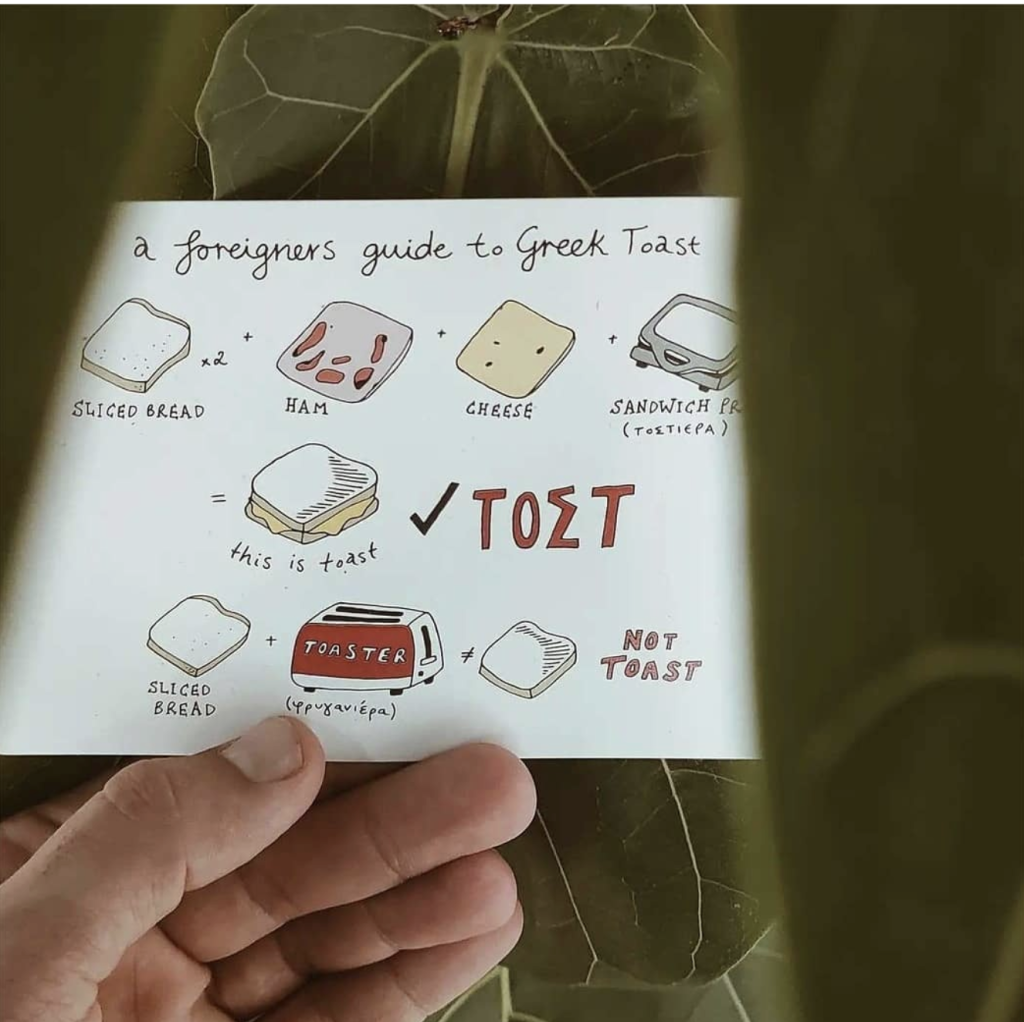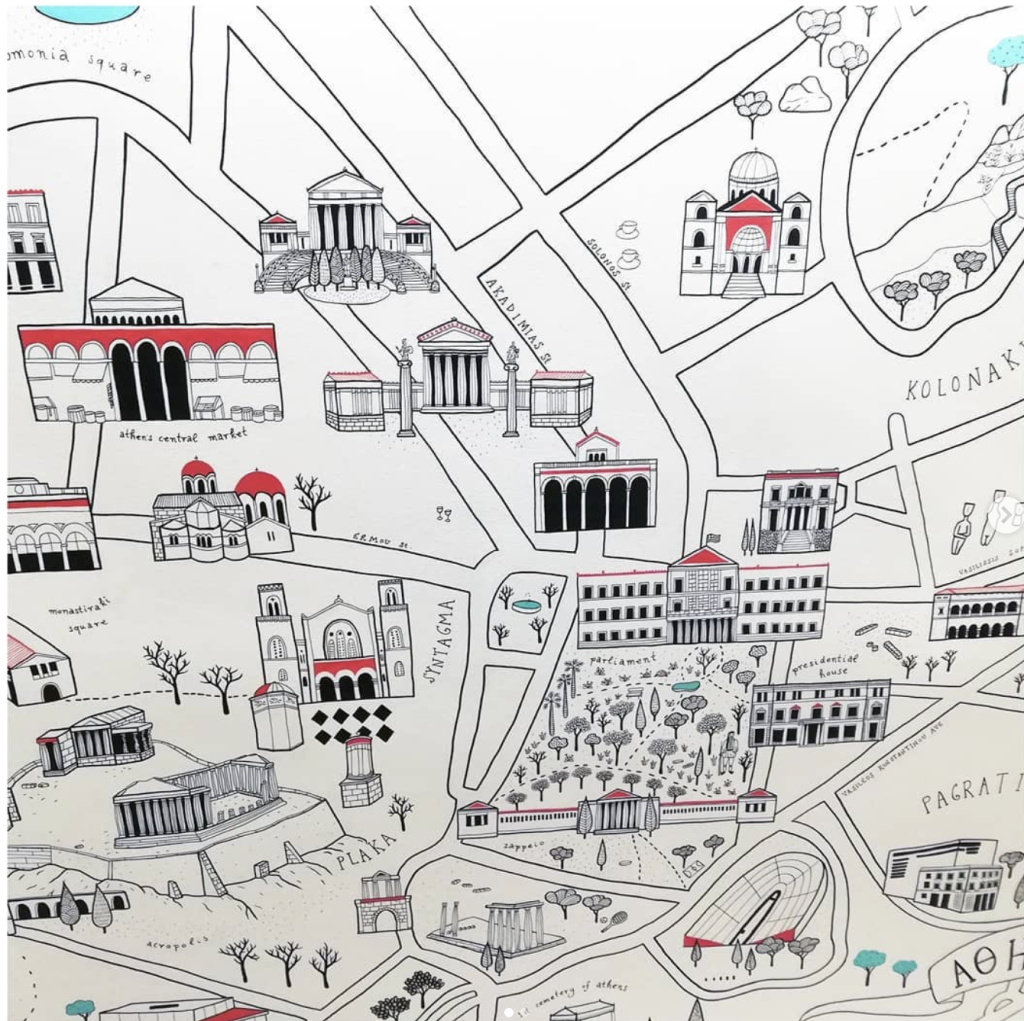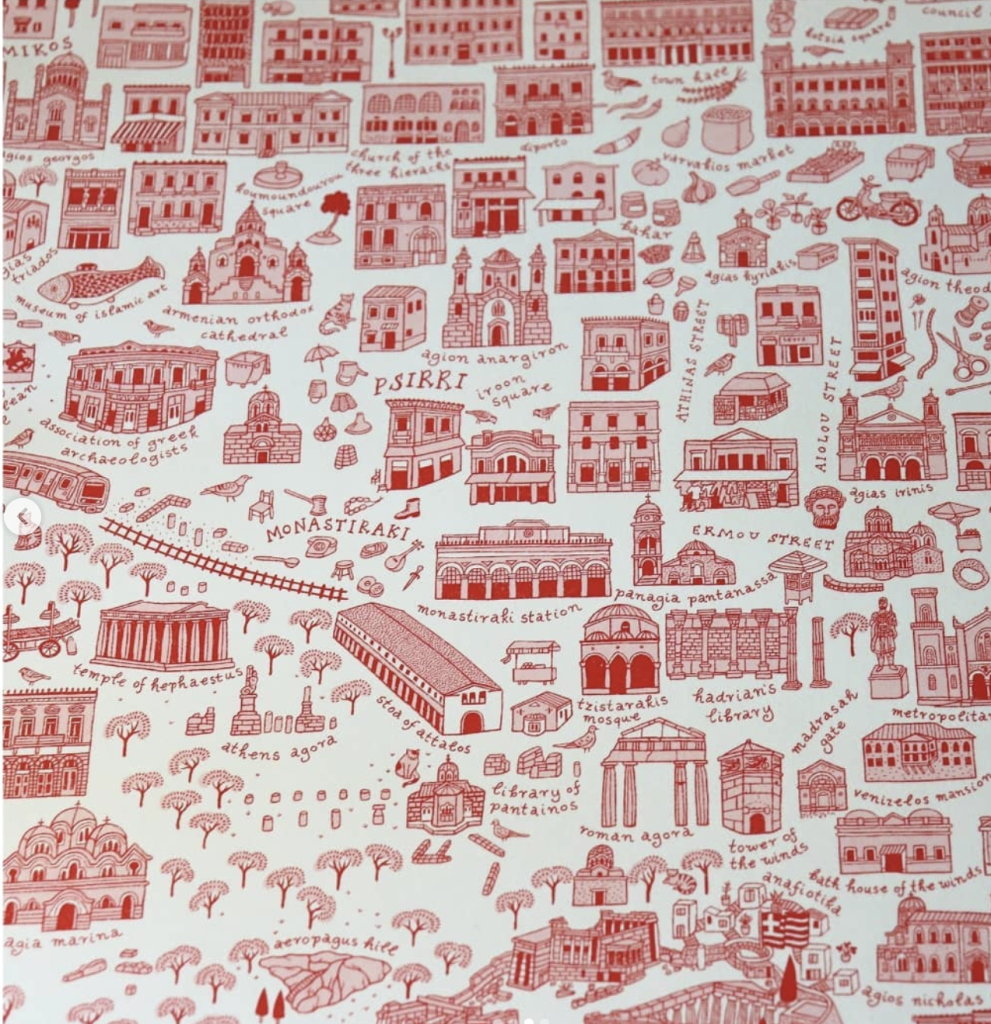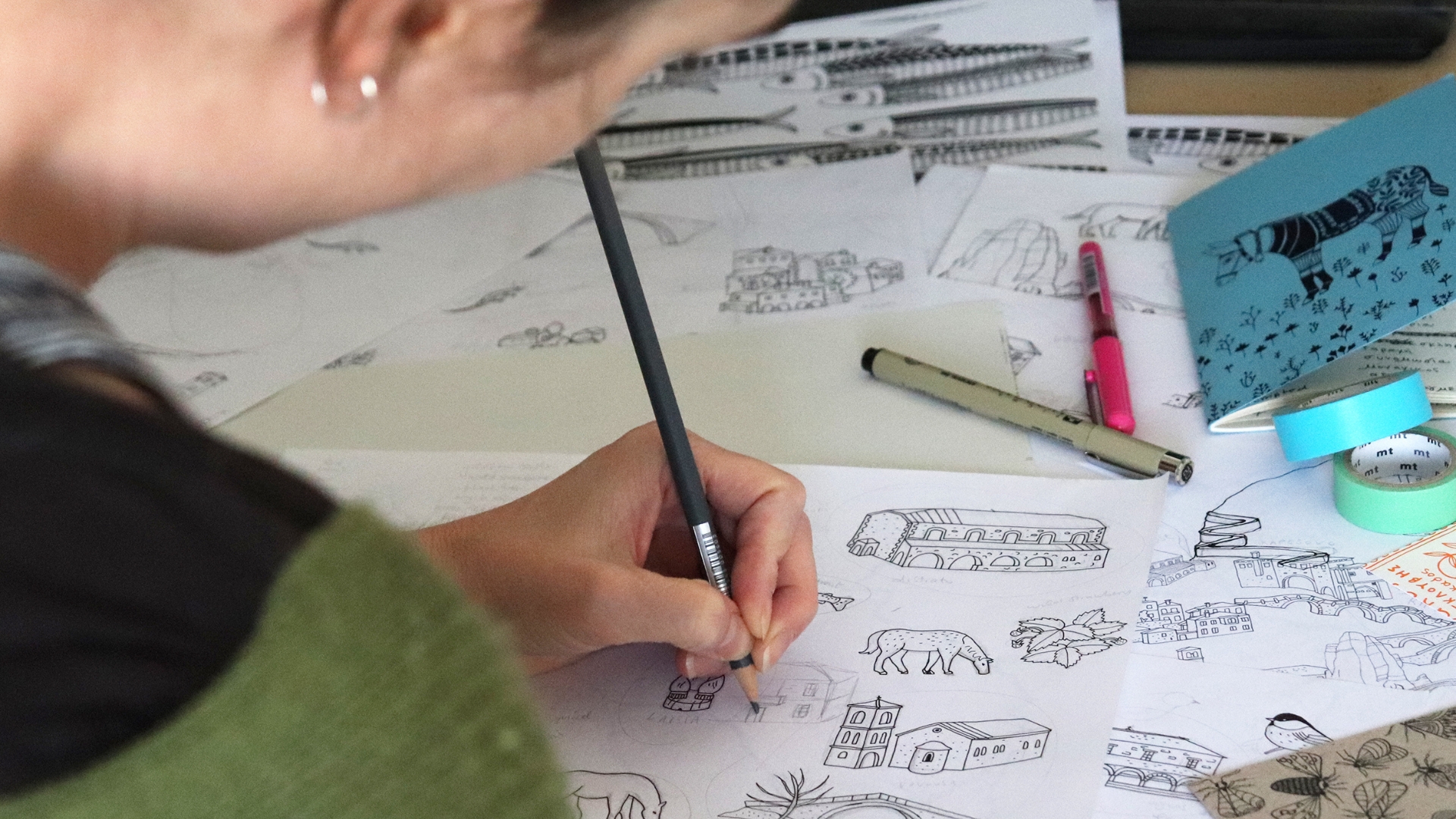By Giorgos Psomiadis.
How can a map of the Greek islands be so unique and different from any other map you have ever seen? How can everyday life details, such as fruits, plants, or even a feta package become symbols in an art piece?
Australian illustrator, Lila Ruby King, who moved to Athens in 2007 after she married a Greek national, has been creating art drawing inspiration from a variety of sources. From historical figures and ancient myths, to aspects of her daily life such as the fruits she buys in her local ‘laiki’ market.
Everything can find a place in her special, puzzle-like art creations.
“I always liked art – drawing, painting, etc – since I was young. I did it all through high school, and I decided that I wanted to continue, so went on to study Visual Art at university,” she tells The Greek Herald.


Born and raised in Perth, Lila found life in Greece to be quite similar to what it used to be in Australia. Everyone was living for summer and the beach.
“I really love the food here, and all the advantages of a big European city – the art exhibitions and museums. I also really love how easy it is to get around on foot and on public transport,” she says.
“I do still find the bureaucracy challenging and frustrating, although there have been some improvements since COVID. But this was definitely something that took some time to get used to.”
How did Greek culture inspire her in the first place?
“It’s everything,” she says. “Living in Athens you’re surrounded by thousands of years of stories, thousands of years’ worth of art, and it’s not just in the museums. I pass monuments when I’m on the tram, when I’m doing deliveries and when I’m in the metro. I suppose these are the more extraordinary aspects though.”
She continues explaining to us that having grown up in another part of the world helps her appreciate small things such as how charming the feta packaging is, the novelty of being trapped in a car surrounded by goats in the countryside, or the unexpected ingredients that can be turned into a spoon sweet.
Mythical creatures intertwined with island landscapes and city monuments. Watching her work, one can immediately spot that her attention hops around from one theme to another.
“I grew up loving animals and nature, as well as reading lots of Greek mythology stories, so one of the great things about my job is that I get to spend time on whatever has my interest at any particular moment,” she says.
“It’s probably one of the things I like most about my mapmaking, I get to research and include many areas of interest, elements of the landscapes, animals, and birds, history, buildings, artifacts and local products and foods.”

The most impressive and popular part of her work is the maps she designs in great detail, as well as the food-themed designs.
“It’s really lovely when I finish a new island map, and people from that island love the design. While I do aim my designs mostly at the tourism market, I know there’s a fine line where a souvenir becomes tacky, so locals buying my designs is a big compliment,” she adds.
Lila describes herself as a minimalist when it comes to color, and a maximalist when it comes to line and detail, while she loves packing in as much detail into a design as she can.
“Most of my designs start as pencil and ink drawings on paper, that I then digitalise. Usually, there’s some final perfecting digitally, depending on the design. My maps often come together like puzzles, where I create the elements separately, and then arrange them digitally at the end.”
Fighting austerity through art
The beginning of Lila’s career in Greece was not easy and it took her some time to find the right places and people to work with. The first tourist-aimed designs she created, came as a response to her not being able to find anything she liked in Plaka neighbourhood, Athens to send back home. As a result, she ended up designing her own postcards.
“In the few shops I worked with, my first designs sold well, and that encouraged me to create more ,” she comments.
She is now living in Greece for more than 15 years and that means she has experienced changes, like the period of austerity, when things were hard for a lot of people. At that time, drawing all the fantastic things she loved about Greece was a way to cheer herself up.
“From here I was able to put together a big enough collection to do a couple of trade shows, and from then on, I’ve been in a nice position, where oftentimes shops are finding me. I like to think I’ve found a nice niche for myself now, I do design a lot of souvenirs, and most of the feedback I get is really positive, even from locals which is very flattering,” she says.
Environmental themes are also present in Lila’s work and as she says, nature has always been one of her main inspirations.
“I try to be thoughtful with my material choices, although it’s hard to be perfect. Most of the papers I use have a certain percentage of recycled content. The tote bags, t-shirts and tea towels I use are from organic cotton,” she says.
“I certainly wouldn’t consider myself an activist, but looking after the environment is something I feel strongly about, and I’m sure it comes through in my work, whether it’s including rare birds in my maps, or creating a design about my composting obsession”.


An example of environmental acting through her art, was “The Australian Bushfire Fundraiser”, a project she worked on with Tind, another Greek artist who runs the screenprinting workshop she works with.
During the Black Summer bushfires, they came up with a few prints that they ended up selling to raise money for charities.
“I came up with two illustrations based on Australian flora and fauna, and Tind very kindly donated his time, ink, and expertise! We sold a few of the prints, which was great, however, COVID came quickly after, and soon people’s attention was diverted elsewhere, so there are still a few of the prints available in my webshop for anyone still interested,” she explains.
Asked about her future plans, she discusses about the ongoing project of making maps of the Greek islands.
“I’d like to eventually finish one [map] for each of the major islands at least, and then to have some sort of exhibition with them all. Lately, I seem to only manage about three a year, so it’s probably a few years away yet,” she concludes.

